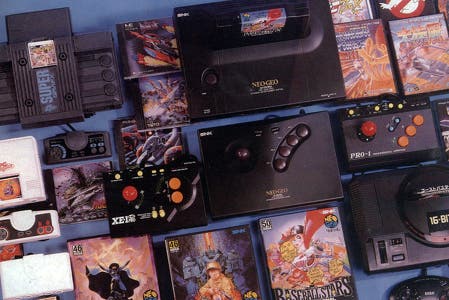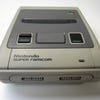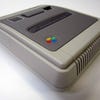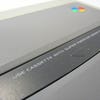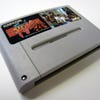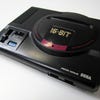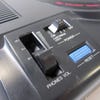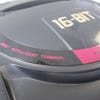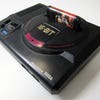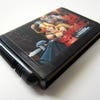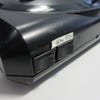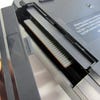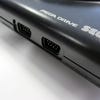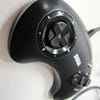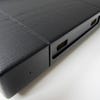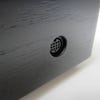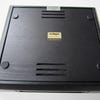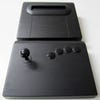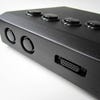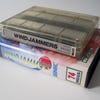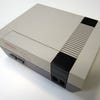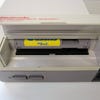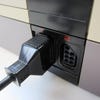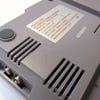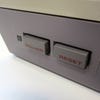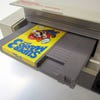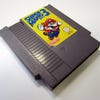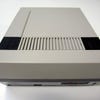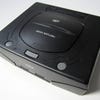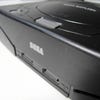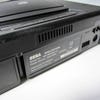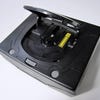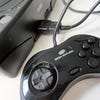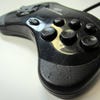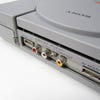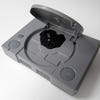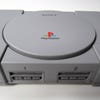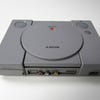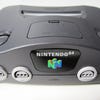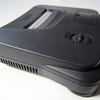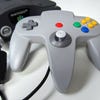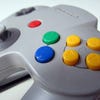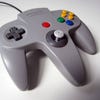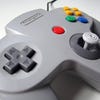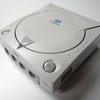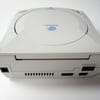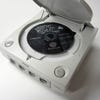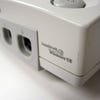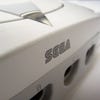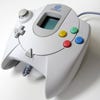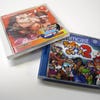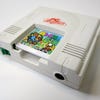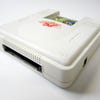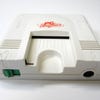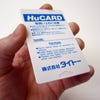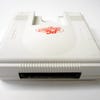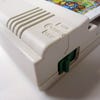The Ultimate Retro Console Collectors' Guide
Everything you need to know about the greatest video games systems ever made.
Despite the interactive entertainment industry's manic obsession with relentless technological progress, improved audio visual capability and cutting-edge artificial intelligence, the enduring popularity of vintage software proves that good old-fashioned gameplay remains the biggest draw for most players. All three current console manufacturers offer the ability to digitally download past classics to their systems, and on the PC, retro enthusiasts are ably served by the likes of Steam and GOG. Clearly, all the deferred rendering, anisotropic filtering and bump mapping in the world can't change the fact that good games never die, they just mature.
While it's unquestionably a positive thing that modern-day players have access to such a wide range of retro titles through current-generation hardware, there's a definite buzz to playing on the original systems. The unmistakable feel of the authentic joypad, the sound of a cartridge clicking home and the strangely addictive pleasure of sourcing games in their original packaging - all of these elements drive a retro gaming industry which is worth millions worldwide, and shows no signs of flagging.
Many collectors do it for the love of the systems; they might have owned a particular console when they were younger, and now that they possess a large disposable income wish to revisit their misspent youth and attempt to replicate the thrill they got when they saw Street Fighter II running for the first time on a Super Nintendo. Younger collectors don't have that nostalgic link, yet the high esteem in which some of these ground-breaking machines are held means that even those who weren't even born during the original release period still crave a piece of history.
Below is a selection of some of the world's most popular and collectible vintage gaming machines, some of which you'll no doubt be familiar with, others possibly less so. Regardless of whether or not you recognise the name or can recall when you last booted one up, each of these platforms is well worth reassessing from a modern perspective.
The RPG King: Super Nintendo
Nintendo faced a stern challenge when it came to creating the successor for its 8-bit NES, but the Super Nintendo did not disappoint. Launched as the Super Famicom in Japan, there were reports of buyers being mugged for their newly-acquired consoles, such was the unprecedented demand.
"While heavily criticized for its seemingly slow processor, the Super Nintendo quickly became the system of choice for some of the best platformers and shoot 'em ups to come out of the 16-bit generation," explains Nintendo Life's Corbie Dillard. "It didn't hurt that the system was packaged with what is still one of the greatest Super Mario titles ever crafted."
Nintendo enjoyed what was arguably its golden era with this console, producing some brilliant titles. To supplement games like F-Zero, Super Metroid, Yoshi's Island and Pilotwings, the SNES was ably supported by every developer worth their salt, with the likes of Konami, Capcom, Square, Irem, Hudson, Taito, Koei and Enix all throwing their weight behind the machine. The list of third-party must-have titles is exhaustive: Super Ghouls 'n' Ghosts, Cybernator, Parodius, Super Castlevania IV and Axelay - amongst many, many others - proving to be solid gold slices of interactive brilliance. However, it's for its services to the RPG genre that the SNES is possibly best remembered.
"This was where the system truly shined," says Dillard. "There's probably never been a console with as rich and diverse a line-up of role-playing games as the Super Nintendo."
Former NES loyalists Square and Enix - rivals then, but now joined as one company - produced some of their best work on this 16-bit beauty. Chrono Trigger, Secret of Mana, Final Fantasy III, Soul Blazer, Illusion of Gaia, Terranigma - it's scary to think just how many man-hours have been sacrificed by gamers worshipping at the role-playing altar that is the SNES.
"Some game systems are collectible due to their rarity, others because of their age, but the Super Nintendo remains one of the most widely-collected systems due to its incredible game library," continues Dillard. "While the more modern Nintendo systems rely heavily on first-party Nintendo releases, the Super Nintendo was pretty much a who's who of some of the best game developers and publishers of the 16-bit era. And with over 700 official game releases, there's certainly not a shortage of titles to choose from."
Due to its incredible popularity, sourcing a SNES today is relatively easy. The redesigned US model is an eyesore when compared to the gorgeous Japanese and European machines, but it offers perhaps the greatest access to the machine's wonderful library of software; territory lockout chips were used in many titles, and these prevent the PAL system from running them without the use of a converter cartridge or internal modification.
"While you can purchase adapters that will allow Super Famicom cartridges to fit into a North American Super Nintendo system's cartridge slot, most collectors just break off the tabs in the bottom of the slot that keep the Super Famicom carts from fitting properly," explains Dillard. "Playing NTSC games on a PAL system - and vice versa - requires a bit more ingenuity, as the Super Nintendo system does a boot check on games at start-up in order to distinguish which region the game is from."
Thankfully, getting an imported SNES console to work in the UK is somewhat easier. A neat bonus is that no step down voltage converter is required to operate either the Super Famicom or American SNES in the UK; the machine will happily accept a standard UK SNES power supply, or - rather ironically - a Sega Mega Drive Mk1 PSU.
Expect to Pay: £15+
Best For: Role Playing Games, Platformers
Drawbacks: Slow CPU means some games suffer from slowdown
Notable games: Super Mario World, The Legend of Zelda: A Link to the Past, Super Mario RPG, Chrono Trigger
Sports and Arcade Action: Sega Mega Drive
Nintendo's big rival in the early '90s, Sega's fame stemmed from its association with cutting-edge arcade gaming. Unsurprisingly, its 16-bit challenger played host to a dazzling range of coin-op conversions, including Altered Beast, Space Harrier II, After Burner II, Super Monaco GP, Golden Axe and Alien Storm. The more mature standard of software - combined with savvy marketing which secured licensing deals with famous American sports stars - allowed Sega to crack Nintendo's stranglehold in the US, where the system (which was rechristened as Genesis to avoid a copyright dispute) became the market leader. The arrival of Sonic the Hedgehog made the system even more desirable. "Genesis does what Nintendon't", the infamous adverts bleated.
Although it featured weaker graphics and sound hardware than the SNES, the Mega Drive had one ace up its sleeve: its nippy Motorola 68000 processor, clocked at 7.67MHz. This was faster than the 65c816 Ricoh 5A22 in Nintendo's machine (clocked at 3.58MHz), and meant that the Mega Drive could handle visually intense shooters with oodles of sprites on the screen at any one time. The console was soon inundated with notable examples of the genre, including Thunder Force IV, Zero Wing, Hellfire, Gley Lancer and MUSHA Aleste. In comparison, the SNES saw relatively few scrolling shooters, and the ones that did exist often suffered from unfortunate bouts of slowdown.
Sports titles were another strong area for the Mega Drive, thanks largely to Electronic Arts' decision to pick Sega's machine as its main console. PGA Tour Golf, NFL Hockey, FIFA International Soccer and John Madden Football all arrived on the Mega Drive first, and this boosted the system's commercial fortunes in the West dramatically.
"If buying a Mega Drive today, be sure to get a pre-modded example that allows you to switch between 50 and 60Hz in order to circumvent Sega's attempts at region protection."
"What makes Mega Drive collectible - other than the fact it was Sega's last truly successful console - is seeing the birthplace of many classic Sega franchises," comments James Newton, a self-confessed Sega fanatic who finds himself in the unusual position of being Editor of Eurogamer sister-site Nintendo Life. "Shining Force, Sonic, Streets of Rage and more all had their first - and in some cases best - outings in 16-bit."
Due to its immense popularity in Europe, the Mega Drive is a common sight in second hand shops and at car boot sales.
"If you're collecting Mega Drive hardware there's certainly enough to choose from - two official Mega Drives, the rare Mega CD hybrid MultiMega and US-only portable Nomad, just to name a few examples," comments Newton.
Also look out for the Mega CD and 32X add-on hardware; while neither set the world alight in terms of sales, they offer an additional level of appeal to collectors.
The Mega Drive boasts rudimentary region control; Sega's initial attempts to blocking the lucrative 'grey import' market were piecemeal at best.
"The company made the cartridges in different shapes depending on the region, so a Japanese game won't fit a PAL Mega Drive or North American Genesis," explains Newton. "Of course that was easy to circumvent, so the tech got a bit fancier later on."
Sega started to add region checking to its software from around 1992 onwards, which gave rise to internal modifications by dedicated importers that would allow users to toggle between 50 and 60Hz, thus opening up the entire Mega Drive software library. If you're looking to purchase a machine today, seek out a modded example.
Expect to Pay: £15+
Best For: Sports games and arcade ports
Drawbacks: Poor sound chip and lack of RPGs
Notable Games: Sonic the Hedgehog, Shining Force, Thunder Force IV, Golden Axe, Gunstar Heroes
The Rolls Royce of Consoles: SNK Neo Geo
SNK's famous system hit the market at the same time as the SNES and Mega Drive, yet offered a superior level of power. Simply put, it was almost literally an arcade machine in your home. Fatal Fury, King of the Monsters, Metal Slug, Samurai Shodown and Art of Fighting were all doing the rounds in amusement arcades all over the globe, yet with a Neo Geo AES system, you could play these coin-gobbling classics on your humble 21-inch Trinitron in the comfort of your living room.
"Back in the early 90's, the Neo Geo AES was basically the Ferrari of game consoles," explains Corbie Dillard. "While the system was basically the MVS arcade hardware but in home console form, it came with a $600 premium price tag that was out of reach of most consumers. As if the system itself wasn't costly enough, the individual game cartridges cost in excess of $200, a rather steep asking price for a single game, arcade quality or not."
These astronomical prices limited the system's mainstream fortunes, yet the Neo Geo enjoyed extensive coverage in magazines of the era, which only served to accentuate its mysterious appeal and elite status. Even when SNK attempted to position the format as a more mass-market proposition, the AES hardware remained in the spotlight.
"Two CD-based systems were launched in an effort to make the hardware and games more affordable," says Dillard. "However, incredibly lengthy loading times made it a less attractive alternative to the AES system for many."
These days, the Neo Geo has lost little of its power to enthral. A 2D powerhouse, it is still enjoying developer support over 20 years after it first saw the light of day. Hardware prices remain buoyant, due largely to the system's cachet with retro collectors. Software is a similar story; while some of the older titles can be acquired reasonably cheaply, the low production runs for popular games have inflated prices to eye-watering levels. The AES version of Metal Slug is so rare that it regularly sells for four-figure sums on sites like eBay. Of course, the MVS route offers a cheaper option for budding collectors.
"Because the pinouts of the MVS and AES cartridges are different - a strategy used to keep arcade owners from using the cheaper AES cartridges in their MVS arcade cabinets - you'll have to use an adapter to run MVS carts on an AES system," explains Dillard. "Ironically, MVS games are now cheaper than their AES equivalents. This has become a popular option for buyers, given the fact that many AES home carts are selling for in excess of $800 in today's collectors market, and most MVS titles can be had for less than $100."
It's even possible to go the whole hog and purchase a proper MVS system - either in 'consolised' form or - if you possess the space - as a proper cabinet.
"If you're looking for the authentic Neo Geo arcade experience, you should track down an actual MVS arcade cabinet," states Dillard emphatically. "Many collectors even turn these older arcade cabinets into full-on restoration projects, an easy task given that most parts for them are still readily available on the internet."
Many consolised MVS systems are rather rough around the edges, although some companies - such as Analogue Interactive - are producing professionally-crafted CMVS units that are the stuff of hardcore collector's dreams.
Expect to Pay: £100+
Best For: Fighting games
Drawbacks: Expensive machine to collect for
Notable Games: Metal Slug, King of Fighters, Samurai Shodown, Fatal Fury
A Japanese Revolution: Nintendo Entertainment System
Arguably the machine that made Nintendo the company it is today, the 8-bit NES (or Famicom as it was known in its native Japan) became synonymous with the hobby of video gaming in the late '80s. Launching in the Far East in 1983, it established a new era of dominance for games consoles which exists to this very day; in North America, it proved to be the knight in shining armour for an industry which had fallen to its knees following the catastrophic crash of '83.
Many of Nintendo's most beloved franchises - such as Mario, Zelda, Metroid and Kid Icarus - began life on the NES. Other firms - such as Konami and Square - would ultimately build their reputation on the system with best-sellers like Castlevania and Final Fantasy. 60 million units were sold during the console's lifespan, a truly astonishing figure that even its illustrious successor, the SNES, could not surpass.
The NES is seen as something of a badge of honour amongst dedicated retro collectors these days, but owning an original system isn't without its risks. The infamous 'toaster' cartridge mechanism - added to the Western units to make their look more imposing and expensive - is deeply flawed; over time, the action of loading in carts bends the contact pins, which means that well-used systems will refuse to boot games properly. This issue can be fixed, but ultimately the needlessly complex design is to blame.
Nintendo took steps to alleviate such issues by launching the top-loading NES 2 (known in Japan as the AV Famicom) in 1993, which boasts a streamlined design and SNES-style pads - known amongst collectors as 'dog bone' controllers. This is the smart choice if you're looking to start collecting today, but be aware that the US model only supports RF output. The Japanese AV Famicom has RF and composite, and is therefore easier to hook up to modern LCD televisions.
Expect to Pay: £30+
Best For: Platformers
Drawbacks: Original machines are prone to faults with the loading mechanism
Notable Games: Super Mario Bros 3, The Legend of Zelda, Castlevania, Final Fantasy, Mega Man
The Loveable Underdog: Sega Saturn
The history books tend to label the Saturn as something of a dud; in the West, Sega faltered in the face of Sony's uber-cool PlayStation onslaught and fell into a distant third position by the time the Nintendo 64 launched. However, in Japan the system enjoyed better success. "Even some 17 years after launch, the Saturn's still a bit of a black sheep in the Sega family," says James Newton. "It launched with some decent arcade conversions and three new IPs - when does that ever happen these days?"
Notoriously difficult to program for due to its complex internal architecture, the Saturn struggled to match Sony's popular system. Despite this, it was home to some of the best titles of the generation.
"The system didn't hit its stride until Sega really started cranking out the hits," states Newton. "Games such as Sega Rally, Virtua Fighter 2, Virtua Cop and some fantastic original software in the form of NiGHTS and Burning Rangers. The machine's 2D performance was also exceptional."
Panzer Dragoon Saga, Radiant Silvergun, X-Men vs Street Fighter, Shining Force III and Guardian Heroes also helped the console earn a solid reputation with importers and dedicated players, while Capcom and SNK's sterling support in Japan ensured that the format lasted longer there than it did in other parts of the world.
"Go for the Mark 2 white Japanese system if you can - it not only looks great, but offers a range of internal improvements over the original iteration."
"There's a lot of tat on Saturn that makes collecting tough, but the gems are well-known and still highly collectible," explains Newton. "Panzer Dragoon Saga still commands around £100, and Radiant Silvergun's recent XBLA re-release hasn't made much of a dent in its price either. There are some brilliant hidden gems in the Saturn's admittedly small library, and that's what makes collecting so enjoyable."
European Saturn consoles are cheap and fairly common these days, and they can be easily modified to play Japanese and North American software.
"Like most CD-based consoles, the Saturn is region-locked, so NTSC imports won't work right away," Newton says. "You can grab an Action Replay converter cartridge that plays imports, but the serious collector will want a 60Hz modded console to play the games in full-screen and full speed, or a true imported system. Purists will want to check out a Japanese model, as this offers access to the more impressive library of Japanese software. Go for the Mark 2 white system if you can - it not only looks great, but offers a range of internal improvements over the original iteration. If you take the PAL route, look out for Capcom and SNK fighters which require the 1MB or 4MB RAM carts - you'll need a special converter if you want to enjoy these on your European system."
Expect to Pay: £20+
Best For: Sega arcade conversions, shooters
Drawbacks: Cartridge expansion slot can be temperamental on older units
Notable Games: Sega Rally, Virtua Fighter 2, Panzer Dragoon Saga, Shining Force III, Radiant Silvergun
The Mainstream Champion: Sony PlayStation
Born out of Sony's aborted deal with Nintendo, the PlayStation evolved from a SNES with a CD-ROM drive to the console that would ultimately end Nintendo's reign over the world gaming industry. Packed with amazing 3D graphics capability and boasting a clean, sophisticated case design, it's little wonder that the PlayStation turned heads when it launched back in 1994.
Of course, decent games helped, too. Support from the likes of Namco (Ridge Racer, Tekken), Capcom (Street Fighter Zero, Resident Evil) and Square (Final Fantasy VII) ensured success with veteran players, but the format offered something for everyone, turning interactive entertainment into a more mainstream pastime and transforming non-gamers into frenzied enthusiasts.
"The system played a pivotal part in the transition from 2D to polygons, and that opened up the floodgates for an array of truly groundbreaking titles," explains Sammy Barker, Editor of PlayStation-focused site Push Square. "But the CD format also helped, giving developers a cheaper and more capable storage mechanism to cope with the increasing complexity of games. Ultimately, the PlayStation became a haven for third-party releases in almost all genres, and that strength in depth, alongside its technical competence, is what made it one of the greatest systems of all time."
Sony made several modifications to the PlayStation console throughout its lifespan, eventually removing the myriad AV connections along the back and replacing them with a single port. Early models suffered from dodgy CD drives, leading to the spectacle of users turning their machines on their sides in order to prevent audio and FMV skipping. The revised and miniaturised PSOne system solved these issues, and could even be connected to an official LCD screen for the ultimate portable experience.
"The revisioned, miniaturised PSOne system solved all of the problems of the early machines, the dodgy CD drive being the most notorious issue."
Second-hand consoles aren't pricey these days, but be wary of issues regarding the CD drive. Games are also relatively cheap, with only a few titles demanding excessive resale prices.
"The best thing about collecting PlayStation games is that there's such a wealth of great software," adds Barker. "Obviously there are plenty of rare titles that demand high prices on auction websites - the likes of Castlevania: Symphony of the Night and Tombi spring to mind - but there are also hundreds upon hundreds of really interesting, original games. One of my favourite titles is a little known mini-game compilation called Incredible Crisis. It's the kind of game that just doesn't exist in today's market, and revisiting those quirky experiences is one of the best things about collecting PlayStation Games."
Expect to Pay: £15+
Best For: Role Playing Games, Racing games
Drawbacks: Early models prone to skipping audio and FMV
Notable games: Final Fantasy VII, Tomb Raider, Gran Turismo, Resident Evil
Nintendo's Stumble: The Nintendo 64
After the groundbreaking success of the NES and SNES, it goes without saying that high hopes were in place for Nintendo's next system. Despite hosting some of the best games of the generation, the N64 seems destined to be remembered as something of a disappointment.
Blighted by Nintendo's insistence that expensive cartridges made more sense than cheap CDs, the system lacked significant third-party support - the most famous defection being Square, which halted production on Final Fantasy VII and moved the project over to Sony's PlayStation when it became apparent that the cartridge format was limiting the vision of the developer. The loss of one of its greatest allies during the 8 and 16-bit eras was a tremendous blow for Nintendo, and other companies - such as Capcom and Namco - were reluctant to put too much resource into N64 development when the PlayStation offered a larger user base, more expansive storage and cheaper software production costs.
But when the N64 shined, it did so with such power that even its CD-packing rivals couldn't keep up. Titles such as Mario 64, Zelda: Ocarina of Time, F-Zero X and GoldenEye: 007 pushed video gaming into hitherto unseen territory, and that initially bizarre controller offered genuine improvements over existing examples. As if to prove this fact, Sega and Sony quickly issued their own analogue pads, after the N64 was unveiled to the public.
Attempts to solve the system's crippling storage issues fell on stony ground, however; the Japan-only 64DD (or 'Bulky Drive' as it was also known) was a commercial flop, and the high cost and limited storage of the cartridge format would continue to dog the N64 until its final days.
"Some US and Japanese N64s can be modded for RGB output but actually identifying compatible machines involves removing the casing - try to get a pre-modded example."
Picking up an N64 these days is relatively easy, but you should always be wary regarding the condition of the controllers. The analogue stick has not stood the test of time particularly well, and many pre-owned examples feature limp, unresponsive sticks. It's also worth noting that the video output on the PAL N64 is notoriously fuzzy; some versions of the North American and Japanese console can be modded for true RGB, but actually identifying compatible machines involves removing the casing. If you're a real stickler for image quality, try and buy a console that has been modded already.
Expect to Pay: £20+
Best For: 3D platformers
Drawbacks: Few RPGs, lack of third party support, the analogue controllers are easily broken
Notable Games: The Legend of Zelda: Ocarina of Time, Super Mario 64, GoldenEye 007, Mario Kart 64, F-Zero X
The Last Throw of the Dice: Sega Dreamcast
Known for representing Sega's final foray into the world of domestic console manufacturing, the Dreamcast is one of those curious consoles which seems to elicit unanimous outpourings of affection from those that owned it, yet its commercial fortunes were decidedly shaky. Launched in 1998, the machine was unique in that it was capable of running Microsoft's Windows OS - Bill Gates even went public advocating the system.
"Dreamcast was supposed to be a revolution in gaming," says James Newton. "It put a modem in every machine for online functions, boasted highly advanced graphics and had the best memory card in gaming history in the shape of the Virtual Memory Unit, or VMU for short. It launched with a big, bold Sonic game, arcade conversions and decent third-party support in Power Stone and Mortal Kombat, and looked like it might wash away the sour taste of the Saturn."
The inclusion of a modem as standard was a bold move, although Sega's glorious vision of connecting millions of players worldwide never really got off the ground. In the West, the first online title was ChuChu Rocket from Sonic Team - a fine competitive puzzle title, but not one that was going to tempt Quake players away from their PCs. In the face of the continued popularity of the Sony PlayStation, the Dreamcast struggled to tempt developers to its cause.
"There arguably aren't as many truly great games for Dreamcast as Saturn, but it's still got some of Sega's best," Newton adds. "There's Skies of Arcadia, Crazy Taxi, Phantasy Star Online and Shenmue I and II, of course."
As the millenium loomed, Sega faced serious financial problems and the plug was unceremoniously pulled on Dreamcast production in 2001. Despite its premature death, software continues to be produced for the system, with NGDEVTEAM's Gunlord scheduled for release later this year.
"Dreamcast systems can be easily modified to accept games from all regions, but the 'freeloader' discs of the era do the same job and save you from putting your console under the knife."
Dreamcast systems are relatively inexpensive these days, and can easily be modified to accept games from all regions. If you're unwilling to put your console under the knife, you can use one of the many swap discs that are available.
"The machine is region locked, but it's incredibly easy to circumvent with a 'freeloader' disc," explains Newton. "You can even burn your own freeloader, which is a wise move if you want to play Japan-only games like AM2's Cosmic Smash or Sega love letter SEGAGAGA."
Be aware that if you pick an imported model, you'll need a step-down converter to run it in this country. Another aspect worth highlighting is the inclusion of VGA support via an external adapter. If the game supports it - and most decent Dreamcast titles did - you can hook up your system to a PC monitor or a modern flat screen TV and enjoy razor-sharp 640x480 image clarity.
Expect to Pay: £20+
Best For: Arcade conversions, first-party Sega games
Drawbacks: Limited third party support, weak online experience
Notable Games: Shenmue, Power Stone, MSR, Soul Calibur, Skies of Arcadia
Shooter Heaven: NEC PC Engine
Although it never got an official release in Europe, the PC Engine nevertheless remains an iconic piece of hardware with especially dedicated retro gamers. The impossibly small core system (it's officially the most diminutive gaming system ever, according to the Guinness Book of World Records) remains one of the best-looking consoles of all time, and the unique 'HuCard' format - which delivered arcade-quality gaming on a credit card-sized slice of plastic - made bulky NES cartridges look positively laughable in comparison.
Released in Japan in 1987, the PC Engine managed to do the unthinkable by challenging Nintendo's seemingly unassailable dominance. It achieved this thanks to some astonishingly authentic coin-op conversions, the most famous being Irem's R-Type. Although the game had to be split across two HuCards (sold separately at full retail price) in order to showcase all of the levels, it was as close a match to the arcade original as anyone had ever experienced at the time. The PC Engine cemented its reputation as the arcade addict's console of choice with ports from Namco, Taito, Konami and NEC Avenue, the latter of which handled conversions of many popular Sega titles, such as After Burner, Outrun and Power Drift.
NEC and Hudson worked together on expanding the PC Engine family, with a world-first CD-ROM attachment arriving in 1988. The ill-fated SuperGrafx followed in 1989, a misguided attempt to bolster the Engine's chances against the freshly-launched Sega Mega Drive. The system contained the same basic architecture as the standard Engine, but crammed in more RAM and an additional video chip. Despite hosting what is possibly the best domestic conversion of Capcom's Ghouls 'n' Ghosts, the SuperGrafx failed to gain a foothold, and only five dedicated games were ever released. Mercifully, it was still able to play standard PC Engine HuCards as well.
"The PC Engine is another system that can be modified to give an RGB SCART output - this offers a massive image clarity advantage over the original RF video signal."
The next significant hardware release was the Turbo Duo, which combined the stand-alone PC Engine system with a CD-ROM drive in one sleek casing. Although most seasoned Engine collectors tend to agree that the best games remained on HuCard, the wonders of the compact disc gave us titles like Dracula X: Rondo of Blood and Y's - the latter being an RPG which very nearly achieved the same level of brilliance as Square's seminal efforts on the SNES.
Although the PC Engine was branded Turbografx-16 in North America, it's not a true 16-bit console - it actually houses an 8-bit CPU with a dual 16-bit graphics processor. The North American release ended in failure, and the lack of a European launch means that buying a Japanese system is a surprisingly expensive venture. It's also quite a complex one; the original white Engine outputs NTSC RF, and requires modification - or the purchase of an expensive AV Booster attachment - in order to function on UK TV sets. If you're serious about collecting, then aim for one of the Duo models, such as the Duo-RX. Also consider getting it modded to output an RGB SCART signal for much improved picture quality.
Another PC Engine quirk is the lack of a second controller port - to enjoy multiplayer titles like Bomberman and Final Match Tennis, you'll need a multi-tap accessory. Astonishingly, NEC didn't feel it was necessary to rectify this oversight on any of the subsequent system revisions, and the PC Engine Duo-RX - the 12th official variant of the original hardware, released in 1994 - was still lumbered with just one joypad port.
Expect to Pay: Price varies between hardware variants
Best For: Shooters, arcade conversions
Drawbacks: Sheer number of hardware variants can prove confusing
Notable Games: Soldier Blade, PC Ki/Bonk, Dracula X: Rondo of Blood (CD)
